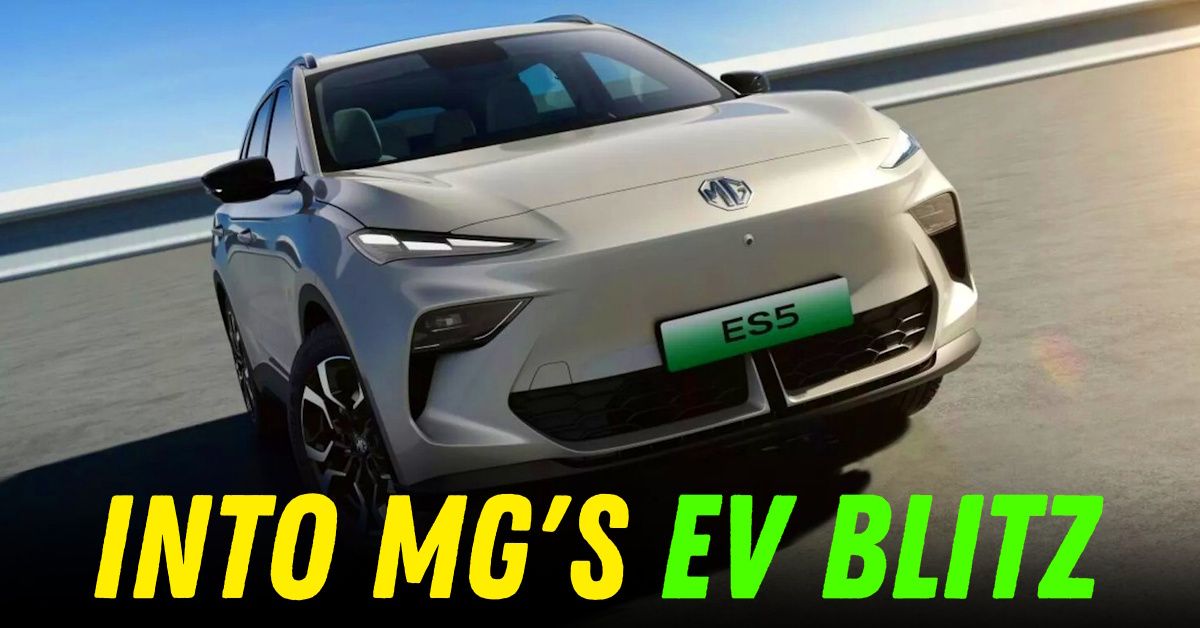Into MG's Plans To Become India's Electric Car King


MG Motor India is not quietly inching into the electric vehicle space. It is gunning for the top spot. At a time when Tata Motors commands the lion’s share of the EV market and Maruti Suzuki prepares to launch its first electric SUV, MG is building a wide-ranging strategy that stretches from entry-level urban EVs to luxury imports. The company is not merely trying to keep pace with rivals. It is attempting to leapfrog them.
The Windsor Pro is the sharpest arrow in MG’s quiver right now. Launched at ₹13.09 lakh with the battery-as-a-service option and ₹18.10 lakh for the outright purchase model, the Windsor Pro directly confronts Tata’s Nexon EV and Punch EV. But MG has taken a different approach, packing in a larger 52.9 kWh battery and an ARAI-claimed range of 449 kilometres, effectively promising more car for less money.
The pricing also sends a clear message to Mahindra. While the XUV400 starts at ₹17 lakh, Mahindra’s new electric SUV duo, the XUV 9e and BE6, starts at ₹22.4 lakh and is expected to go as high as ₹30 lakh for top trims.
The Windsor Pro’s aggressive pricing strategy has worked in its favour. Within the first 24 hours, the car garnered over 8,000 bookings, triggering a ₹60,000 price hike. That initial demand surge validated MG’s bet on accessible electric mobility with an upmarket appeal.
MG currently holds around 21 percent of India’s electric car market, second only to Tata Motors. But the real battle lies ahead. Maruti Suzuki’s upcoming eVX-based EV, internally called the eVitara, is now expected around September 2025. Toyota, in parallel, is developing the Urban Cruiser EV, which could slot in at a premium ₹25–30 lakh price bracket. Both models aim to leverage strong ICE legacies and dealership depth.
MG appears to be preparing for this head-on. The Windsor Pro comes loaded with features that are currently rare at this price - Level 2 ADAS, vehicle-to-load (V2L) functionality, a powered tailgate, and a premium cabin. These are not just checklist items; they are part of MG’s effort to outvalue rivals before they even enter the ring.
MG is also diversifying beyond value-driven models. The Cyberster, scheduled for launch in January 2025, is its halo product, a scissor-door electric roadster with a claimed 500-kilometre range. It will be priced around ₹75–80 lakh and targets a niche of EV-curious enthusiasts currently looking at Porsche Taycans or petrol-powered sports coupes.
Equally important is the M9, an electric MPV due by mid-2025. Built from CKD kits but locally assembled, the M9 aims to undercut the Toyota Alphard while offering high-end features like individual lounge seats, dual sunroofs, and infotainment-rich interiors. Priced between ₹65–75 lakh, it creates a new benchmark for electric luxury without entering the ultra-premium imported bracket.
In the ₹18–25 lakh band, MG is preparing to replace the ZS EV with a new SUV codenamed the S5. The ZS EV has seen decent traction since its introduction but faces increasing competition from the Hyundai Creta EV and Mahindra XUV 9e. The S5 will reportedly feature more advanced battery management systems and better digital integration, addressing younger, urban buyers who expect smartphones on wheels rather than just electric cars.
If MG wants to win the long game, it cannot rely on imports and high-cost kits. Localisation is now a central pillar of its EV roadmap. The Comet EV, MG’s smallest and cheapest offering, is already localised significantly. The next step is assembling prismatic battery cells within India, which could help reduce the Comet’s price further, possibly bringing it below ₹8 lakh.
This will make it even more competitive against the Tiago EV and the upcoming VinFast VF3, both of which are aiming for the budget urban EV buyer. More importantly, it gives MG protection against currency fluctuations, import duty risks, and logistics delays - crucial factors as it scales operations.
Still, challenges abound. Tata’s dominance is rooted in local trust and a deeply integrated EV ecosystem that includes charging infrastructure. Maruti Suzuki may have arrived late but will bring overwhelming distribution muscle and pricing power. Even Hyundai is now ramping up its EV focus with the Creta EV and other born-EV platforms.
For MG, the answer lies in constantly evolving its offerings. Its multi-pronged strategy with affordable entry points, tech-led mid-range upgrades, aspirational top-end models, and increasing localisation, indicates a brand that understands India’s fragmented market. Whether it can become the EV king depends not just on pricing or features, but on how well it anticipates the shifting preferences of Indian buyers.
The real test will come in 2025, as new players enter, customer expectations rise, and EV penetration crosses critical mass in urban centres. MG’s bet is clear: win by being many things to many people, and do it faster than anyone else.